by An Paenhuysen // Feb. 14, 2023
This article is part of our feature topic Family.
“We are a house and we create a family,” says Perla Montelongo about the ‘Casa de Inventos.’ The Berlin-based director of Node Centre for Curatorial Studies started the ‘House of Inventions’ in 2019 on the outskirts of her hometown Ciudad Juárez in Mexico. It is an educational program for youth coming from vulnerable backgrounds. One of its most important aspects is providing support and a sense of belonging to its participants. Unlike Node, art is not the main focus of the ‘House of Inventions,’ but it is a very helpful tool. When I meet Perla for coffee in Berlin, she has just returned from Cd. Juárez where the “kids,” as she calls them, made a short film, entitled ‘Marchita’ (Spanish for “withered”), that was premiered at the end of 2022.
An Paenhuysen: Is the ‘House of Inventions’ a real house?
Perla Montelongo: It is a physical one but it doesn’t have the shape of a house. It is a room, around 60 ㎡ inside a school. It’s a highschool near to the border of the United States. One of our walls is the actual border.
AP: How did the idea for a ‘House of Inventions’ come about?
PM: One part was inspiration, the other destiny. I had this wish to have a space where we could, with a group of people, invent crazy things and think of creative expressions without the pressure of naming it art. When I was looking for spaces in Cd. Juárez, a friend brought me to this high school. It was a huge building and part of it was empty. I was talking to some youngsters there. At first they looked very bored, but when I proposed some ideas, they got very excited.

The American-Mexican border // Photo by the House of Inventions
AN: So you talked to the school?
PM: I talked to the principal. She was very open. Now it has been three years already, almost four.
AN: Why did you decide to call it a house?
PM: The most important aspect of the program is to create connections with the people so they know they have someone they can trust and a place where they can go to when they need to talk. There was one teenager, Maria, who just changed schools so she could be nearer. She told me: “I moved to this school to have a place where someone asks me: ‘How are you?’” This is something we do every day, a check-in, to see how we are.
AN: Is there no commitment asked?
PM: There is a commitment, but because of the extremely difficult circumstances that they live in, they can’t come all the time. We have three rules: if you start the challenge, you finish the challenge. Each challenge lasts three months. The second rule is that we take care of each other. There is no bullying, no insulting, and we take care that everyone is well, physically but also mentally. We also leave the space better than it was. We all clean, we arrange everything, even when we visit an external space.
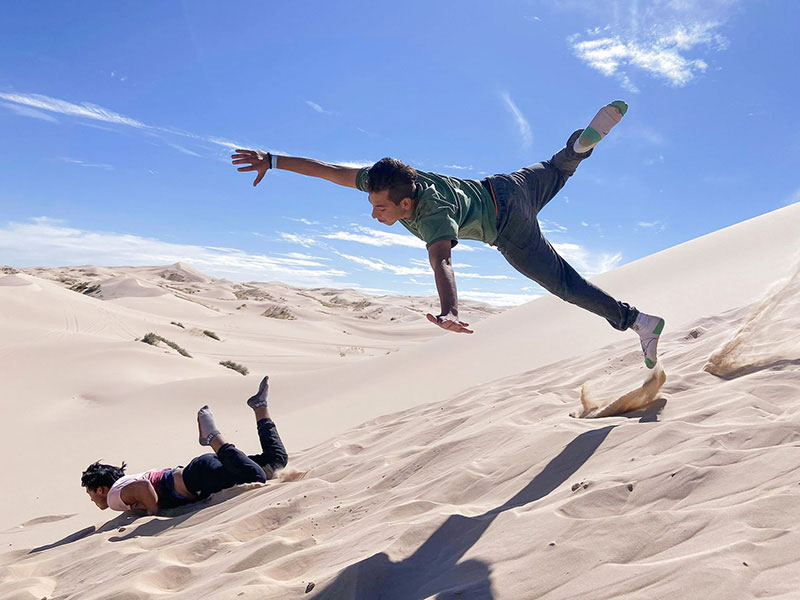
Participants in the House of Inventions
AN: How is art part of the ‘House of Inventions?’
PM: In the way we work with challenges. A challenge is a problem in our surroundings. It could be the trash in the school, a dangerous intersection , a lack of plants or recreational spaces. Once they choose a challenge, they think about how to solve it and then they solve it.
In the process of thinking, there is a brainstorm phase where we have a lot of examples of artists, who approach the same or a similar topic. Usually, it is not a real solution but a way of expanding our thinking. For them, it is often crazy, it makes no sense, but they find it interesting. They say: “Oh, I had the same idea but I didn’t do it because I thought it was stupid.”
AN: So they learn to question the usual ways of solving problems.
PM: It is very important not to look for an immediate solution, the way people told you things are. For youth at risk, there is a lot of poverty and drugs. These teenagers usually work in the factory after school or they are tempted to engage in illegal activities to earn money. They have few options. This program is a way to say that there are other options. One of the teenagers repeatedly tells me how his mind expanded. He is thinking of some businesses he wants to create and now he has a plan to make it possible.
AN: The ‘House of Inventions’ recently finished a short film.
PM: I thought about how violence is a root problem in the city and I wanted to address it. I know the film project ‘Direct Approach’ by the artist Stine Marie Jacobsen. Film is something teenagers love so it is a very effective way to talk about violence through film-making.
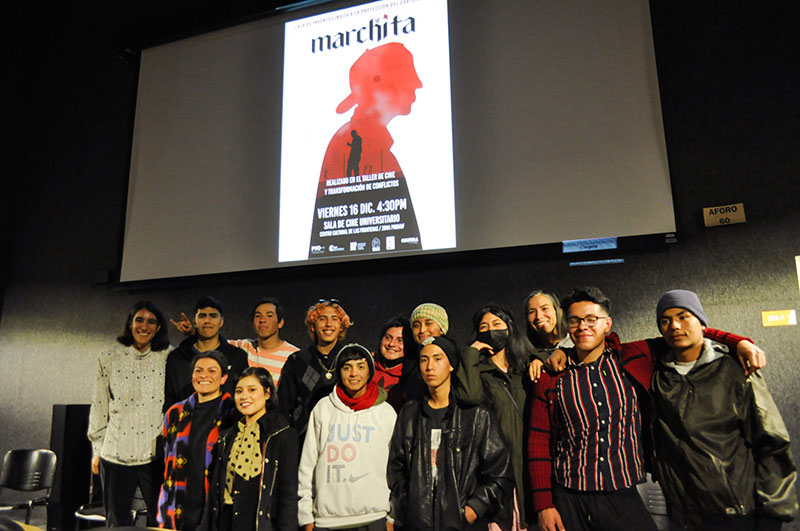
Perla Montelongo: ‘House of Inventions,’ 2019 – present day // Courtesy of the House of Inventions
AN: What is ‘Direct Approach’?
PM: It is a project created by Stine, which addresses violence through film. Through workshops, they talk about the most violent scene in film that they have ever seen. Based on that, Stine asks if in this scene they would be the perpetrator, the victim or the bystander. Then they re-enact the scene and film it, but without any explicit violence. At the ‘House of Inventions’ we started by talking about the most violent scene but instead of re-filming the same scene, we worked during these three months on what caused the perpetrator to commit the crime, what was their past, their environment, what caused this situation. We tried to think of an alternative: what would be needed to avoid the path of this person? They thought of solutions for what is needed to create a better environment and personal tools.
AN: Were they happy with the film?
PM: They were super happy and proud. We presented it in a small university cinema. One of them was saying: “The cinema has bathrooms!” [laughs] They were running around.
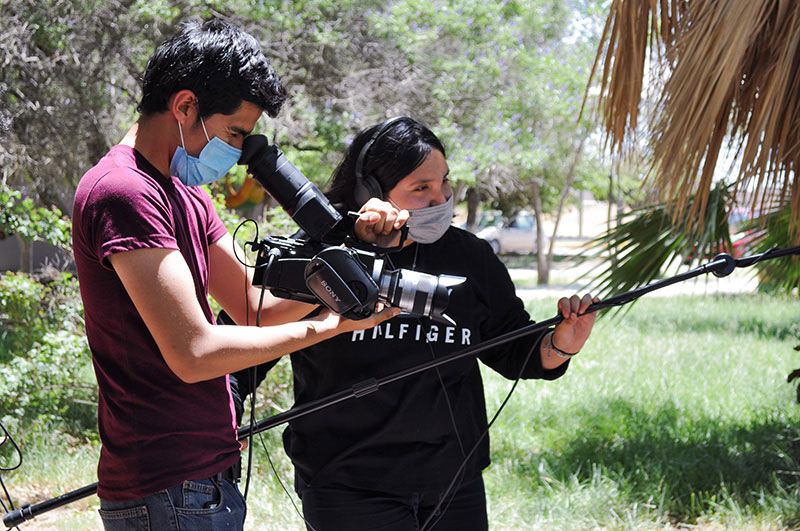
Film Workshop // Courtesy of the House of Inventions
AN: What is the feedback of parents?
PM: Sometimes mothers come and ask: “What did you do with my kid? He has a completely different attitude. He is another person now, respectful and happy.” There was one participant, in the very first group, who never smiled. He was a bully, an intimidating big guy. But suddenly, one day, I hear him ask the person he was bullying the most, a woman with learning disabilities: “Do you need help with this?”
AN: How did the ‘House of Inventions’ accommodate such a transition?
PM: I asked him what happened and he told me that he had been observing us for the last six months. He thought we were like everyone who comes to give a workshop to get paid, to feel good about themselves and then they leave. They don’t really care. He noticed that we really care so he decided to do his very best and be the best version of himself.
AN: There is a lot of get-togethers in the House, especially cooking.
PM: Before the session starts, we have cookies and make coffee. Most of them don’t have breakfast. In the afternoon, we do something simple: sandwiches, salads. They appreciate that I remember what they like. There is one who only likes coffee with milk and he doesn’t eat cheese, another one loves cucumbers.
We use this time to talk about issues in their life. I notice how crucial it is for teenagers to have an adult they can trust, whom they can ask for very basic advice, like help in filling out a form. These things are not that simple if you don’t have a computer or don’t know how to send a formal e-mail.
AN: You’re like a mom!
PM: [laughs] Sometimes we go to the supermarket together. Then I ask them to choose the menu. They have 10 minutes to run around and bring the ingredients. They are happy to know they can decide.
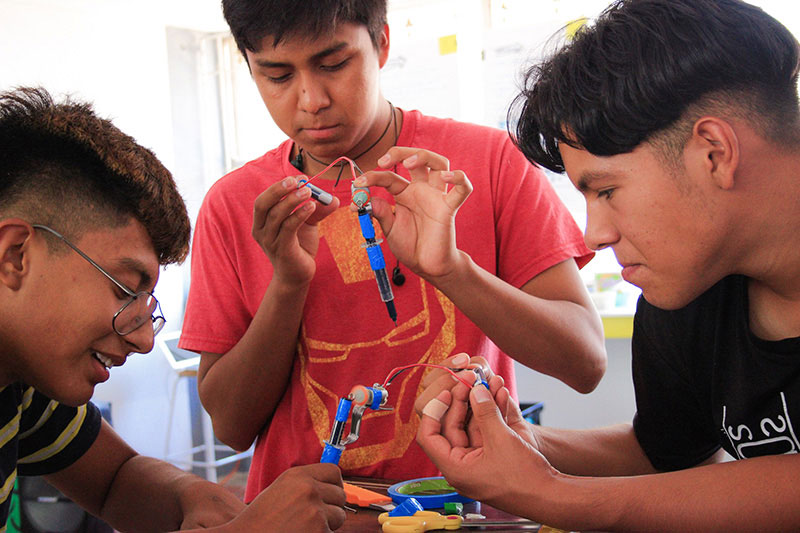
Tattoo Workshop // Courtesy of the House of Inventions
AN: That sounds like fun.
PM: Yes, besides working sessions, once in a while, we do fun activities, like going to the desert, to an amusement park. We like to go biking. They love this. They say: “I have never felt so free!” or “I have never been so far from my house!”
AN: How do they make time for the ‘House of Inventions?’
PM: They study at high school and they work. The high school gives permission to skip some classes to come but they have to do the homework. The fact that they can come is already a big thing. Sometimes they don’t have money for a bus, or they worked the night shift. They live in hard conditions.
AN: How is it for you to be back in your hometown?
PM: I call it my hometown but I was not born there. I moved there when I was 20. I called it my hometown from the very first day I was there. I felt that I could relate to the people. Where I was born, I never felt at home.
It was my dream to do something with the people I relate to a lot. Also because the city is so lawless, everything is allowed in the bad sense, but also in the good sense. You can basically do whatever you want because nobody will care. If I wanted to do an experimental program with teenagers, this was the place to do it. To experiment but also because, for this specific group of teenagers, it would be helpful to do something against the violence that is happening in the city.
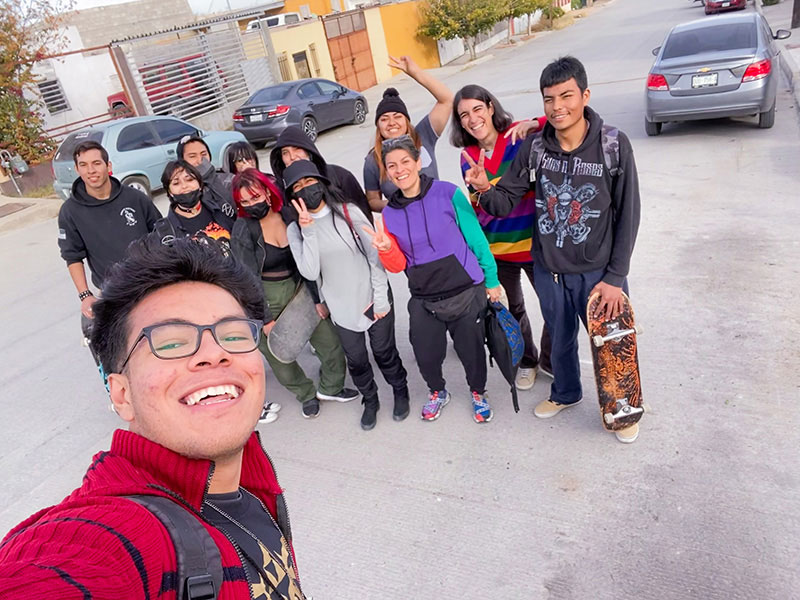
Participants in the House of Inventions
AN: Did you yourself also learn from the ‘House of Inventions?’
PM: I learnt a lot. I learnt especially that you can’t design a fixed program that works for everyone. Even if it is the same city, the same group, you have to be adapting constantly. I’m also learning from how they live so, as long as the kids feel heard, cared for and not judged, that’s the only constant that matters.
























